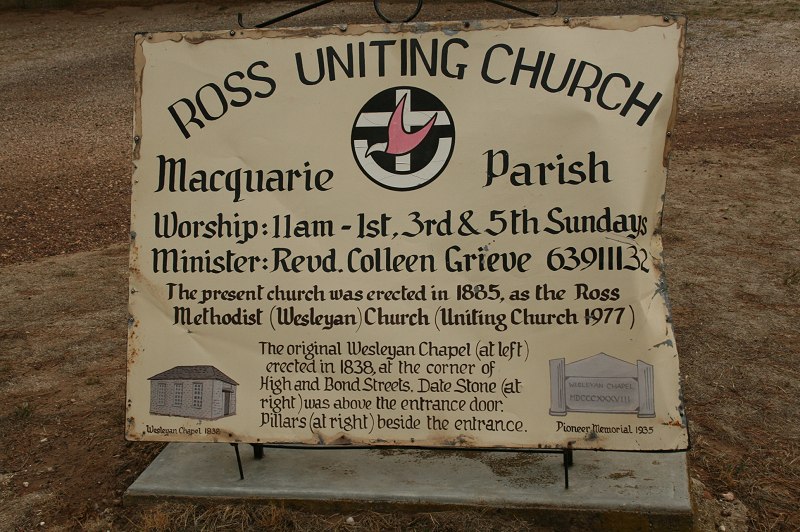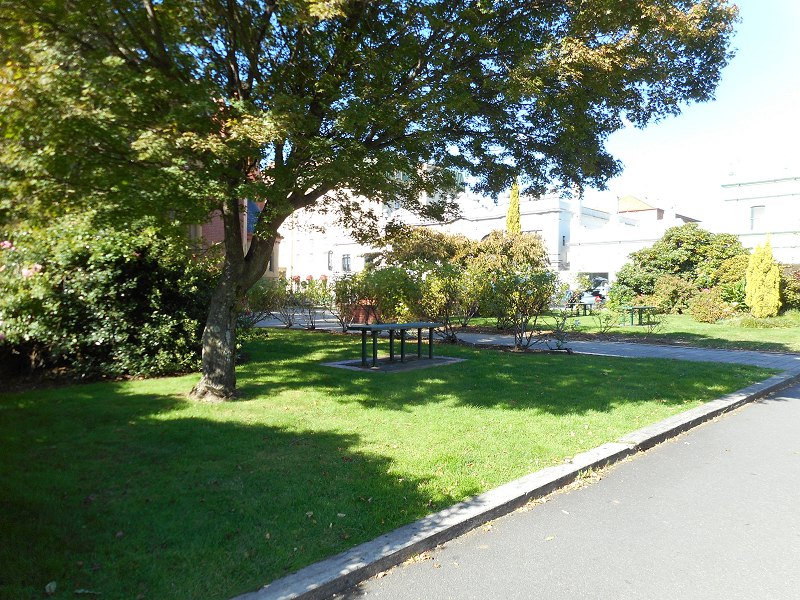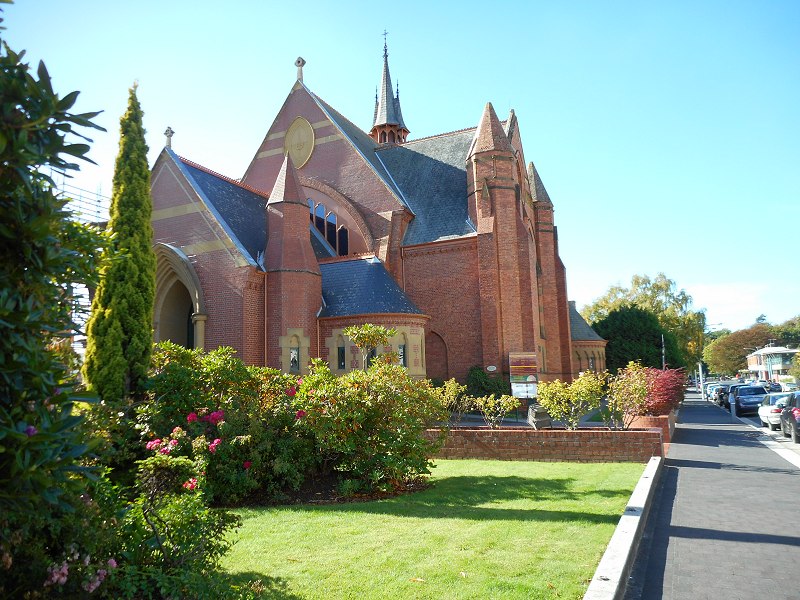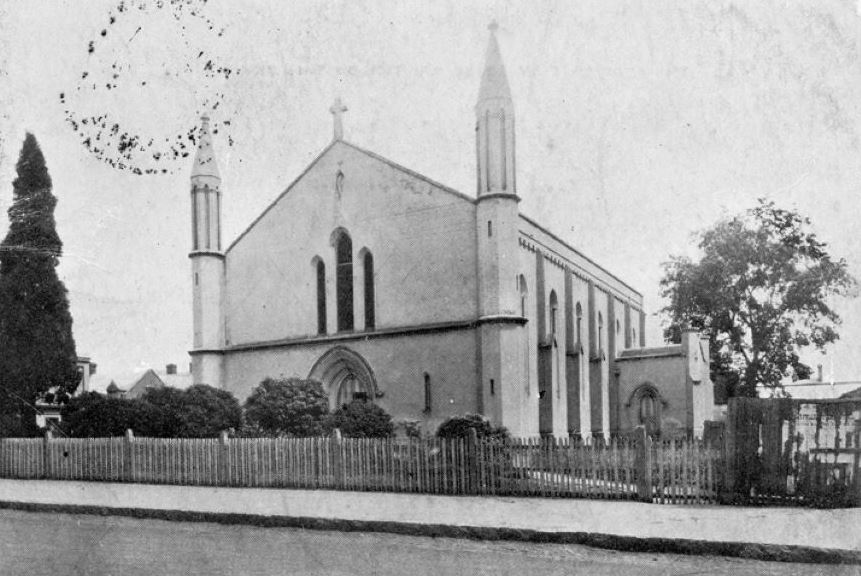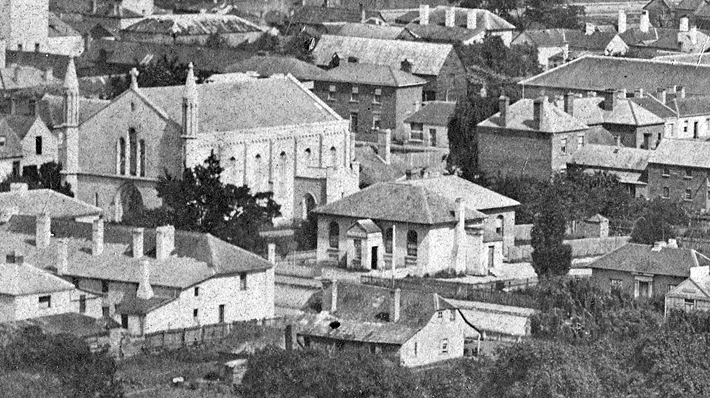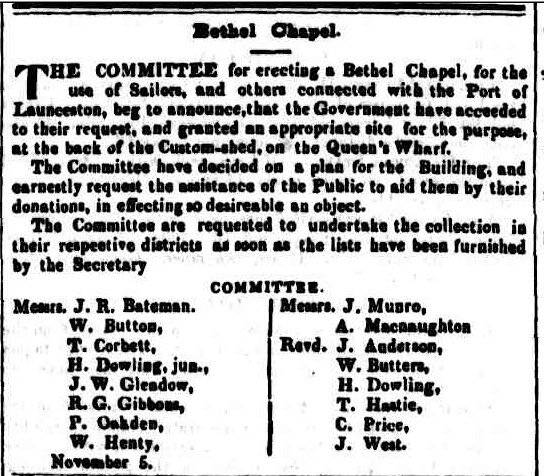Mary Street, Cygnet. Approximate location on Google Maps.
Opened 1903
Demolished c.1939
Photo, 1900s
Photos of older St James & newer building of both stone and weatherboard
There seem to have been four Catholic churches at Cygnet. The first was a weatherboard, possibly temporary, building erected in the early 1860s. This was replaced in 1867 by a more a more substantial small weatherboard church, St James. In 1903 a stone church, the Sacred Heart of Jesus, was constructed which incorporated the older building. This was later demolished and the current St James built in 1940.
NEW CATHOLIC CHURCH AT PORT CYGNET.
LAYING FOUNDATION-STONE.
(By Our Special Representative.)
The ceremony of laying the first stone of the new Church of the Sacred Heart of Jesus at Port Cygnet was performed on the 15th by the Most Rev. Dr. Murphy, Archbishop of Hobart. The weather was, unfortunately, very wet, with the almost necessary result that the attendance on the occasion was diminished.
Arrangements had been made for the fine steamer Mahinapua, of the Union Steamship line, to run from Hobart to Port Cygnet on the Sunday morning; the Hopetoun to run from Huonville, and call at Franklin, Jackson Point, and Shipwrights’ Point; and the Nubeena to run from Southport, and call at Port Esperance. The three steamers ran to Port Cygnet, but, as may be supposed, the passengers carried were far less in number than if the weather had been fine. For instance, 130 travelled by the Mahinapua, though she could have taken 350; and, beyond doubt, the latter number would have been carried had the day been inviting. However, the passengers by the Mahinapua made the best of the circumstances, and the operatic music furnished by a few Italian- minstrels helped materially to make the 45-mile trip to Lovell even pleasant. After the recent very hot weather experienced in Hobart, perfectly cool weather on board ship, even if accompanied by rain, was a delightful experience. The thunderstorm of the Saturday evening had palpably cleared the atmosphere, and the change from heat to cold-for people had to resort to overcoats-was grateful under any circumstances. The Mahinapua left the Elizabeth-street pier at 9.20 a.m., and landed her passengers at the lower jetty at Port Cygnet at 1.10 p.m.
At Port Cygnet, it had been raining since 2 o’clock on the Saturday, and the road from the jetty to Lovell, a mile in length, was marked by mud and water, just as it is often concealed by dust when the weather is dry and hot. So, on the 15th, it was not inviting to pedestrians, particularly ladies, and there are no trams connecting Lovell with the ship- ping. The Rev. P. J. O’Flynn, the pastor of the district, with great thoughtfulness, made all the arrangements possible for conveying the visitors to the site of the new church, but his resources were not illimitable. Not a few had to “negotiate” the wet and muddy road, and they did it courageously. So much for the weather and its consequences.
Now a word concerning the new church. The existing Catholic Church of St. James’s was opened and dedicated in February, 1867 – exactly 36 years ago. It was built by the Rev. J. Holehan, then pastor of Port Cygnet, but now in charge of Kingston. It is a wooden church, picturesque in design; but, as may be supposed, the congregation have outgrown the accommodation afforded. The Mass at the dedication of the present church was celebrated by the Very Rev. P. R. Hennebry, now pastor of St. Joseph’s, Hobart, and the sermon was preached by the Very Rev. Dean Hayes, of the Order of St. Augustine, then in charge of St. Kilian’s. Bendigo, Victoria. Soon afterwards, Dean Hayes was appointed Bishop of Armidale, Now South Wales, but he died in Dublin be- fore consecration. The present pastor of Port Cygnet has been in charge for the lost nine years, having boon sent thither from the Cathedral staff. The first contract for the erection of the new church is for the building of the chancel, the walls of which will embrace a portion of the present church. In fact, the new church will be built outside the old one, and the latter used as long as it does not stand in the way of the builder’s operations. When it does, of course , it will be pulled down.
The chancel now about to be built will, like the whole of the new church, be composed of Port Cygnet white stone, a new quarry of which has been opened at Cradoc Hill, three and a half miles from Lovell It will be 26 feet by 23 feet; the walls on the inside will be 16 feet in height ; and it will be 41 feet from the floor to the apex of the roof. the altar platform will be 3 feet above the floor. The floor will be of Tasmanian hardwood, and the ceiling of pine, nicely panelled,” stained, and varnished. The present contract is to be completed in six months. The contract price is £735. The architects are Messrs. Walker and Salier, of Hobart, and the contractor is Mr. Jonas Cranston, New Town.
[continued]
The Mercury, 16 February 1903

